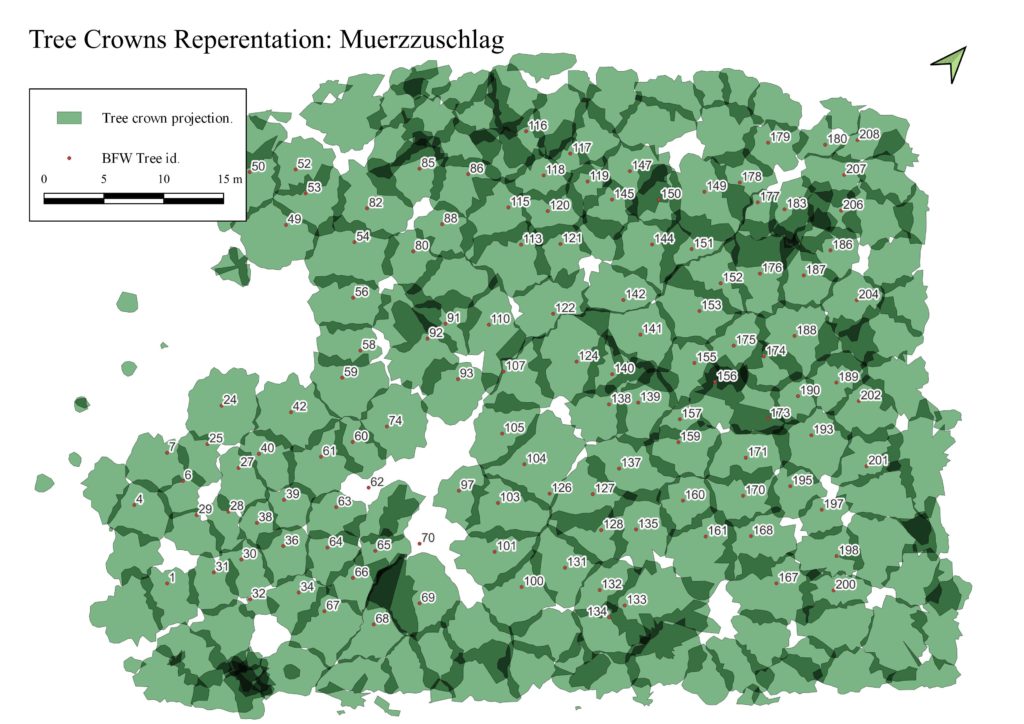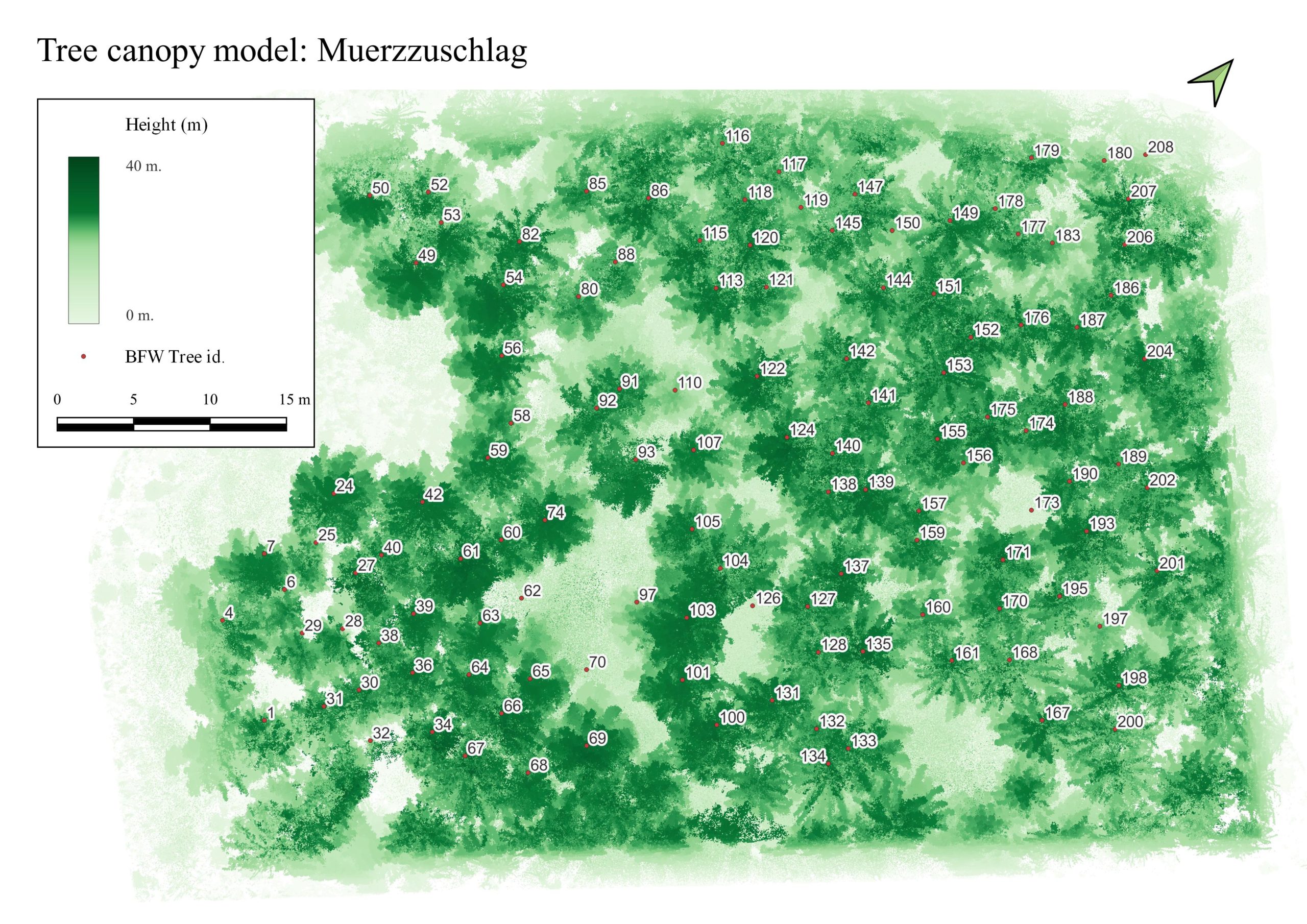(by Albert Villalobos Gasca, Umweltdata GmbH)
Being able to describe with exactitude the shape of the tree crowns has always been a complex task. Nowadays, Terrestrial Laser Scanners (TLS) can play a big difference in the creation of twin models.
Applied to the forests, the result is a high density point cloud that results in highly descriptive models of the measured sample plots (plots is the name for the selected forest area).
The tree crown plays a significant role when considering the growth of trees, as it basically measures the amount of solar radiation that can reach the tree. It thus considers the possible competition to other trees (some neighbouring trees may be higher or lower or have richer crowns). In the same line the height of the tree is also connected to the trunk width, hence the reason to connecting the tree diameter at breast height (DBH), measured by the dendrometers to the height of the tree crowns.
The first figure shows the identification of the trees identified in one sample plot (in Mürzzuschlag), with historical DBH measurements and the height representation of the tree crowns measured by the TLS. This first relation will help us to identify, track and model further research on the trees’ growth and the carbon sink estimation of forests.
In the second figure, the competition for solar radiation is represented by the projected areas of the tree crowns, thus giving clearer idea on how trees grow and which of them could be more dominant in this tree society.



No responses yet